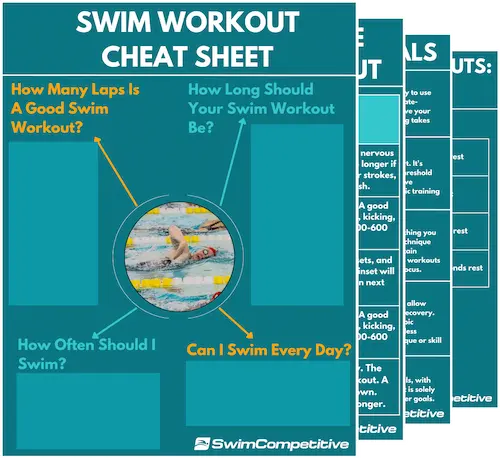If you are looking to spice up your swim training while simultaneously becoming a better and faster swimmer then you better start jumping some rope.
Jump rope for swimmers is a great addition to your training that holds many benefits for your swimming performance. Some of the many benefits for swimmers include improved agility, ankle strength, endurance, coordination, and breathing efficiency. Furthermore, it’s low impact and can be done almost anywhere.
In this article, we will take an in-depth look at some of the most important benefits that jump rope provides for swimmers and how it will help you to become a better and faster swimmer in the long run.
I also want to give you some tips and tricks for getting started as I have been jumping rope for a while now myself and I know how frustrating it can be to learn this movement. That said I have learned a lot since starting and will do my best to help you do the same.
9 Reasons Why Every Swimmer Should Jump Rope
Here are some reasons why swimmers should jump rope-
- Develops explosive power, agility, and speed.
- Improves ankle flexibility and strength.
- Builds endurance and stamina.
- Improves coordination.
- Enhances breathing efficiency.
- Develops fast-twitch muscle fibers.
- Low impact and low risk of injury.
- No gym membership or trainer required.
- You can train anywhere.
1. Jump Rope Develops Explosive Power, Agility, and Speed
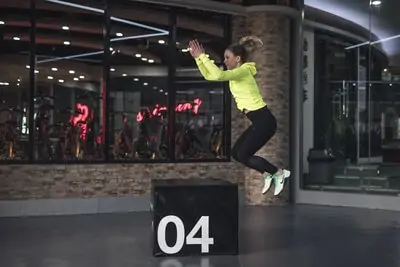
Explosive power and speed are some of the most important factors when it comes to fast swimming. Being able to shoot off the blocks and walls, and having strong underwaters while maintaining a quick kicking motion will allow for some seriously fast swimming.
Jumping rope also helps to develop agility- you’ve probably heard the phrase by Muhammad Ali: “float like a butterfly, sting like a bee”. And this is precisely why jump rope is so popular among boxers- to help them stay light and agile on their feet which is something that also translates well into swimming, for example, teaching you to use light and efficient strokes instead of hard and inefficient strokes.
Furthermore, a study published by the Journal Of Strength And Condition Research found evidence that jumping rope 3 times a week for a 10-week period provided similar and, in some cases, even better results than a traditional high-impact plyometric training program.
So if you want to develop some quick feet and learn to balance your power for maximal swimming efficiency start jumping some rope.
2. Jump Rope Improves Ankle Flexibility and Strength
Ankle flexibility and strength in swimming is more important than you may think. Strong and flexible ankles are required for fast kicking, starts, and push-offs.
Furthermore, your ankles play an important role in creating propulsion while kicking as well as on your underwater dolphin kick, which can make a massive difference in your swimming speed, with a study published by the BioMed Research Journal suggesting that the kick can generate up to 29.7% of speed for male swimmers and 33.4% for female swimmers.
3. Jump Rope Builds Insane Endurance and Stamina
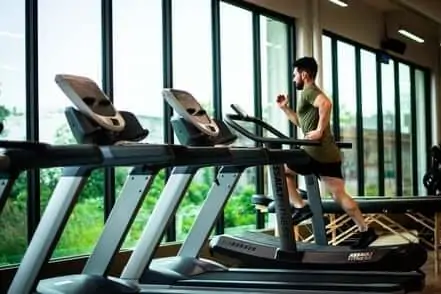
Jump rope is one of the most effective ways to build up your aerobic conditioning. This is great as swimming requires a lot of aerobic endurance and stamina.
The added stamina you build-up through jumping rope will help you both in training and in competition and will make you an all-around better swimmer.
In training, you’ll be able to train harder for longer, ultimately making you faster over time, and in competition, you’ll be able to maintain speed and power for longer which means that you’ll naturally swim faster times.
4. Jump Rope Improves Coordination
Coordination in swimming is very important as it ensures that all of the different muscle groups in our body work together effectively to deliver efficient strokes and kicks as we move through the water.
Jump rope can help us to further improve our coordination, especially in the lower body, which will help us to execute faster and more efficient kicks and strokes, allowing us to maximize propulsion and swim as fast as possible.
Added coordination will also help with things like being more aware of your muscles when you are performing a certain motion, such as your hand entry, head position, or the catching mechanic. All of these things add up to make you a better swimmer.
5. Jump Rope Improves Breathing Efficiency
Try jumping rope for 10 minutes straight without any prior experience. Chances are you probably won’t be able to do it and will just end up whipping yourself with the rope, but for the sake of the example let’s just imagine you got the pattern down right away and could jump effectively.
That said, even if you could jump effectively you’d be out of breath quite soon, not even to mention all of the little muscles in your legs burning up.
Anyway, the point is that jumping rope will improve your breathing efficiency and will teach you how to stay calm and breathe properly under high-intensity situations, such as during or even before a swimming race or during a hard training set.
If you are interested in some more ways to improve your breathing in the water, I recommend checking out my article on the best breathing exercises for swimmers.
6. Jump Rope Develops Fast-Twitch Muscle Fibers
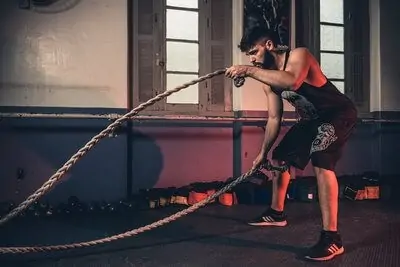
Fast-twitch muscle fibers are responsible for providing short bursts of energy during activities like sprinting or fast swimming. Jumping rope develops these fast-twitch muscle fibers in your calves, shoulders, deltoids, and forearms.
This will help to develop faster swimming mechanics, especially for sprint swimmers. That said, fast-twitch muscle fibers will also definitely come into play on longer distance swims such as sprinting to the wall that last 15m of your race or doing a quick and powerful turn and push off.
Do You Want to Make Every Lap Count?
Stop wasting your time in the pool feeling lost and doing directionless swim workouts, and start training effectively! Our ebook contains 97 structured and goal-orientated swim workouts to help you become a better, faster, and fitter swimmer. Whether you’re a complete beginner or a seasoned pro, there are a multitude of workouts for every type of swimmer.
7. Low Impact and Low Risk of Injury
Like swimming, jump rope is also a low-impact training activity that places very little stress on joints and tendons and makes the risk of injury almost non-existent. What’s more, is that the risk of injury is probably even lower than swimming since you don’t have any added water resistance working against you, and fewer muscle groups are involved.
This makes jump rope a great way to build up your conditioning without actually having to worry about getting injured, which is a risk many other cross-training methods like weight-lifting and certain dryland exercises hold.
And apart from being a low-impact and low-injury-risk training method, it can actually also help prevent injuries. You see, jumping rope is a great additional way to warm up before swimming or doing a dryland workout and will get your muscles ready to perform.
8. No Expensive Gym Membership or Trainer Required
Wanting to do more outside of the water to become a better and faster swimmer is only natural. But what happens when you don’t have the facilities or proper guidance available to you? Either you can’t do that training, or you end up getting injured, which is obviously quite counterproductive.
No worries, though, jump rope requires none of this and allows you to train and develop some great conditioning without all of the fancy equipment or necessary experience of how to operate that equipment, let alone structure an effective training program.
Talking about not needing a gym membership, consider checking out my article on weight training for swimmers.
9. Train Anywhere, Anytime
We’ve all been there- traveling to a far of destination or not having access to a pool for whatever reason. Don’t worry; your training doesn’t have to go to waste. Just pack in your jumping rope and get in a solid 30-40 minute workout wherever you are.
Whether that may be on the beach at your summer holiday destination or in the middle of the busy airport at 10 o’clock at night on your way to wherever you may be going.
Getting Started: What You Should Know
Below we’ll cover some of the most important steps for getting started with the jump rope as a swimmer and crushing it in the pool this season.
1. The Jump Rope You Use Matters More Than You Think
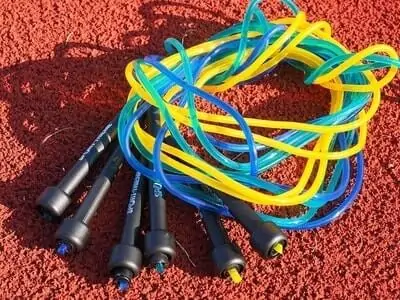
Believe it or not, the jump rope you use will determine how quickly you develop your rhythm and start getting in some solid jump rope streaks.
The first thing you want to look at is the length of your jump rope, as this can have a big effect on how well you’re able to jump. Ideally, when you stand on the middle of your jump rope and pull the handles up to the sky, they should be able to come up to your armpits.
For beginners, I also recommend starting with a standard plastic rope. There are many different rope variations that serve different purposes, such as weighted ropes and speed ropes. These will be harder to learn to jump from.
If you’re unsure which rope to get, you can check out this nice one on Amazon that will be perfect for getting started and even for advanced jumpers.
2. Jump Rope Technique
Learning the correct jump rope technique is very important and will help you to get into a good jumping rhythm where you’ll be able to go for hundreds of reps on end without stopping. On the counter, if you don’t learn the right technique first you run the risk of not being able to learn that rhythm and getting stopped every so often.
This can be super frustrating and may cause you to quit altogether. Luckily, jump rope technique is super easy to learn and you’ll be able to get it down in no time hence you actually know what to do.
Hand and arm positioning: The first thing to focus on is positioning your hand symmetrically roughly the same distance away from the centerline of your body.
Hand and arm movement: Next is the rotational movement that will rotate the rope around your body. During this movement, you want to make sure that there is minimal movement of the elbows and shoulders and that the rotation of the rope is generated solely by your wrists and not shoulders or arms.
The jump: For the jumping movement you want to keep your knees slightly bent and jump from the balls of your feet. You also want to minimize the distance you jump from the ground as much as possible. Ideally, you shouldn’t be moving more than 1-2 inches of the ground. Also, avoid pulling your feet back or tucking your knees in as you jump.
3. Focus on the Basics
Once you start jumping rope and do a little bit of research, you’ll quickly learn that there are many cool variations that you can try out as well as tricks to learn. For the first 2-4 weeks, I want you to focus solely on absolutely perfecting the basic jump rope technique and making sure that you can do 200-300 jumps in a row without having to stop.
This will set a very good foundation for yourself and will ensure that you have good jumping rhythm and technique. Once you start playing around with different variations and tricks, I recommend learning the boxer’s jump as it is another great variation that also provides great conditioning.
4. Keep a Foam Roller Nearby, You’ll Need It
Once you start jumping rope you’ll very soon find out that your calves aren’t as strong as you thought and that there are actually a ton of muscles in your feet that you never knew existed. If you haven’t caught on yet- I’m basically saying you’re going to be very sore after each session for the first few weeks, hence you do it properly.
Make sure to roll out your legs, especially your calves before and after every jump rope session to minimize muscle pain and fatigue.
A study published by the Journal of Athletic Training has shown foam rolling to be an effective method of decreasing muscle soreness and improving athletic performance.
Jump Rope to Become a Faster Swimmer
Jump rope for swimmers is an awesome additional dryland training method that you can incorporate into your training schedule in order to become a better swimmer and spice things up every now and then.
I recommend jumping at least 3x a week for a minimum of 15-30 minutes per session for effective results in the water.
That said, I hope this article helped you to learn more about how jumping rope will benefit your swimming and how you can get started.
